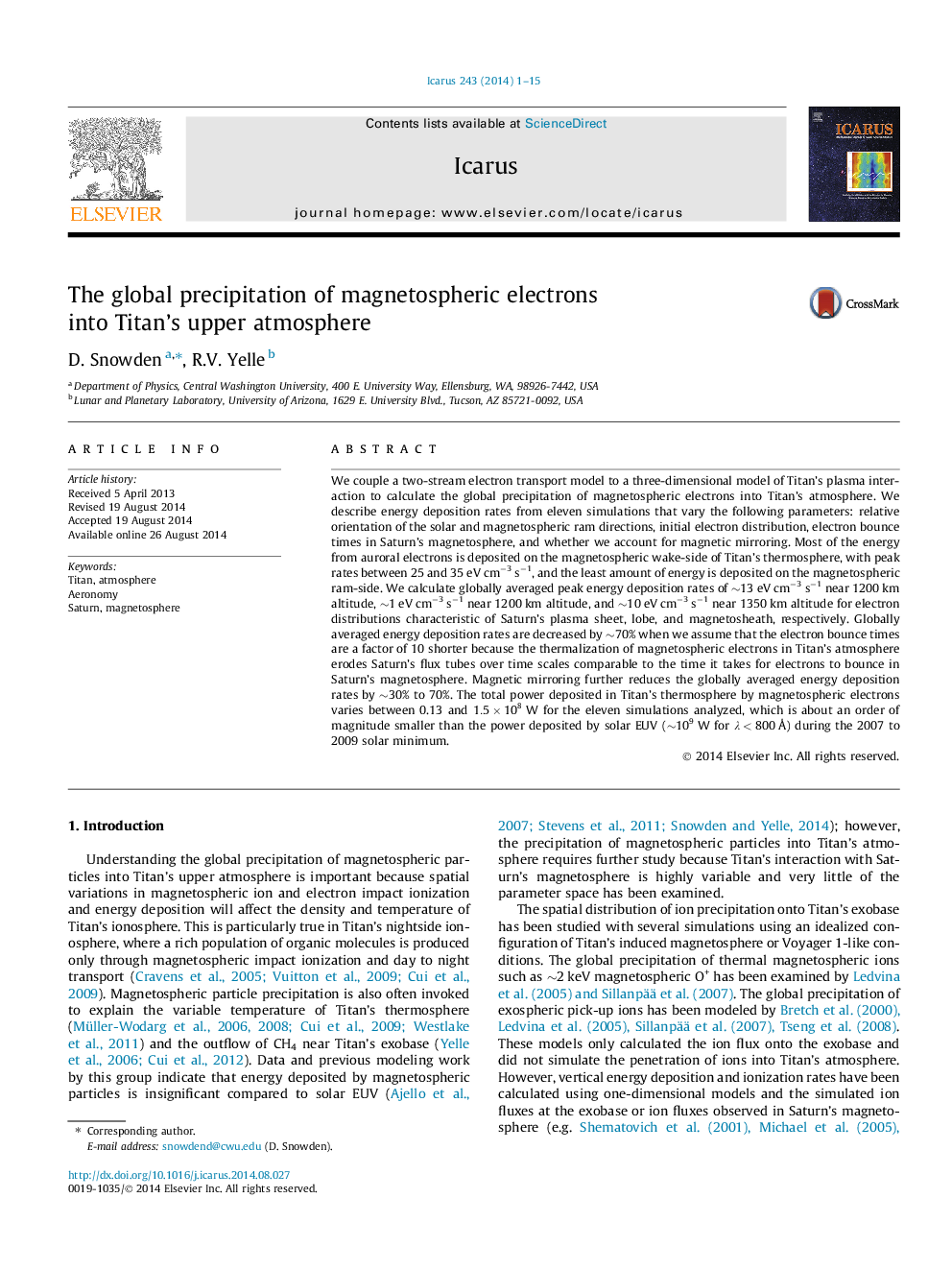| کد مقاله | کد نشریه | سال انتشار | مقاله انگلیسی | نسخه تمام متن |
|---|---|---|---|---|
| 1773077 | 1523547 | 2014 | 15 صفحه PDF | دانلود رایگان |

• Energy deposition maps depend on the orientation of the solar and magnetospheric ram directions.
• The highest energy deposition rates occur on the magnetospheric wake-side, lowest on the ram-side.
• Characteristics of energy deposition depend strongly on the magnetospheric electron distribution.
• Electron energy deposition depends on the electron bounce period in Saturn’s magnetosphere.
• The power deposited by magnetospheric electrons varies between 0.13 and 1.48e8 W (10% of solar EUV).
We couple a two-stream electron transport model to a three-dimensional model of Titan’s plasma interaction to calculate the global precipitation of magnetospheric electrons into Titan’s atmosphere. We describe energy deposition rates from eleven simulations that vary the following parameters: relative orientation of the solar and magnetospheric ram directions, initial electron distribution, electron bounce times in Saturn’s magnetosphere, and whether we account for magnetic mirroring. Most of the energy from auroral electrons is deposited on the magnetospheric wake-side of Titan’s thermosphere, with peak rates between 25 and 35 eV cm−3 s−1, and the least amount of energy is deposited on the magnetospheric ram-side. We calculate globally averaged peak energy deposition rates of ∼13 eV cm−3 s−1 near 1200 km altitude, ∼1 eV cm−3 s−1 near 1200 km altitude, and ∼10 eV cm−3 s−1 near 1350 km altitude for electron distributions characteristic of Saturn’s plasma sheet, lobe, and magnetosheath, respectively. Globally averaged energy deposition rates are decreased by ∼70% when we assume that the electron bounce times are a factor of 10 shorter because the thermalization of magnetospheric electrons in Titan’s atmosphere erodes Saturn’s flux tubes over time scales comparable to the time it takes for electrons to bounce in Saturn’s magnetosphere. Magnetic mirroring further reduces the globally averaged energy deposition rates by ∼30% to 70%. The total power deposited in Titan’s thermosphere by magnetospheric electrons varies between 0.13 and 1.5×108W for the eleven simulations analyzed, which is about an order of magnitude smaller than the power deposited by solar EUV (∼109W for λ<800Å) during the 2007 to 2009 solar minimum.
Journal: Icarus - Volume 243, 15 November 2014, Pages 1–15